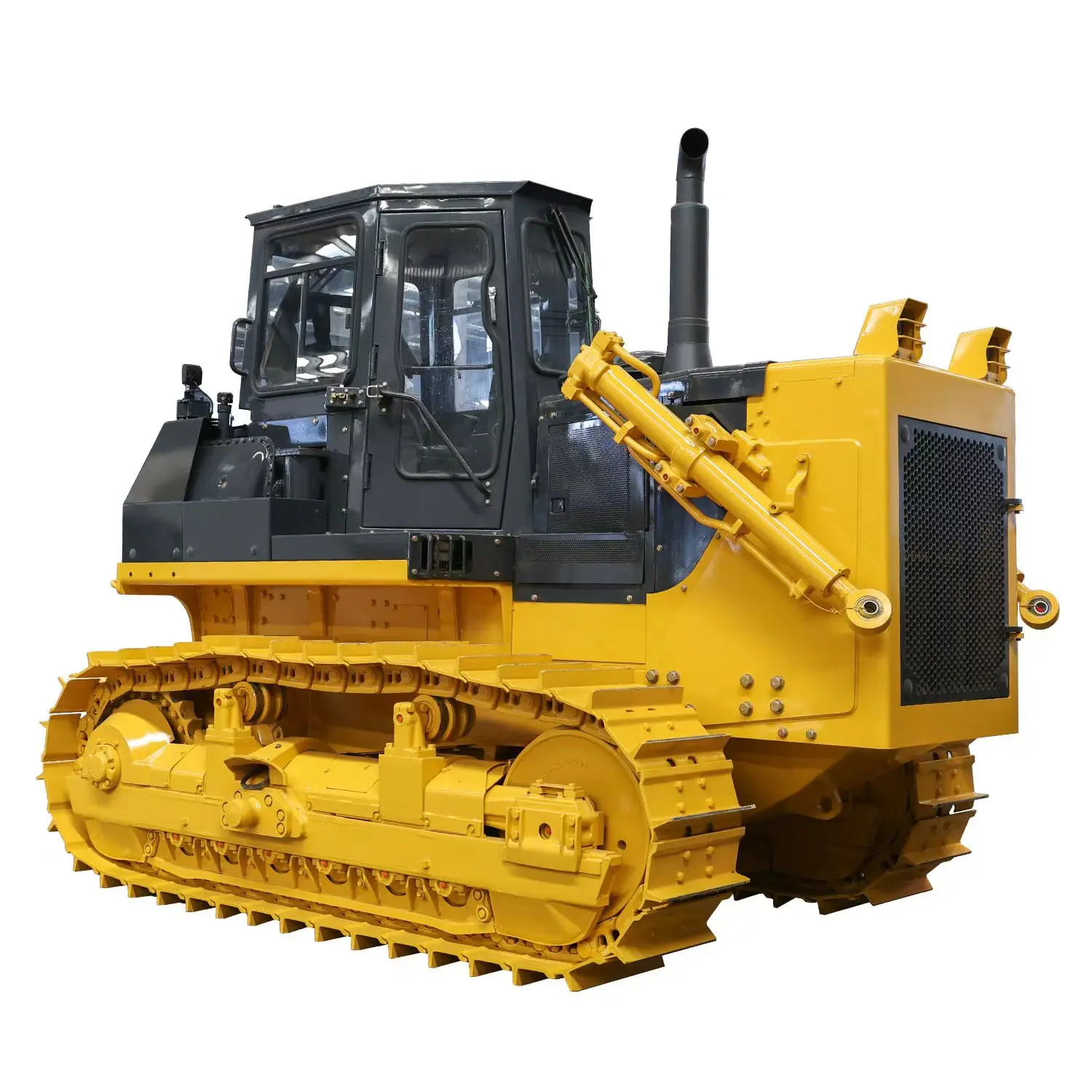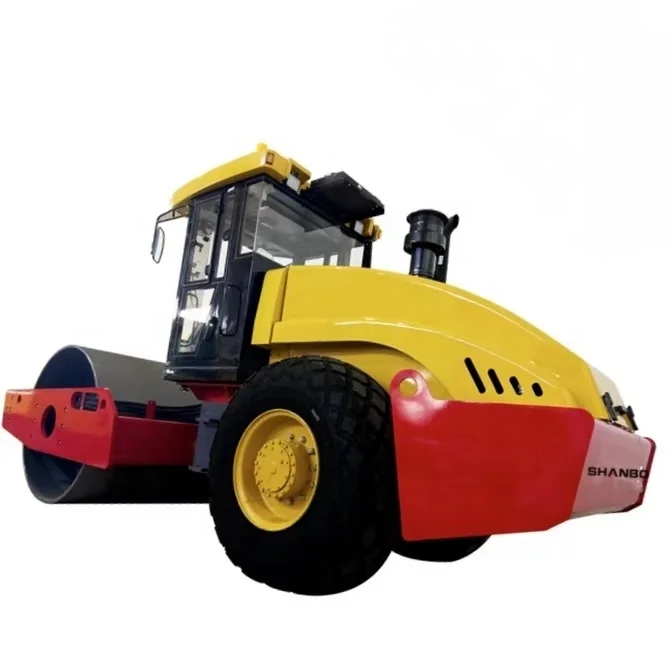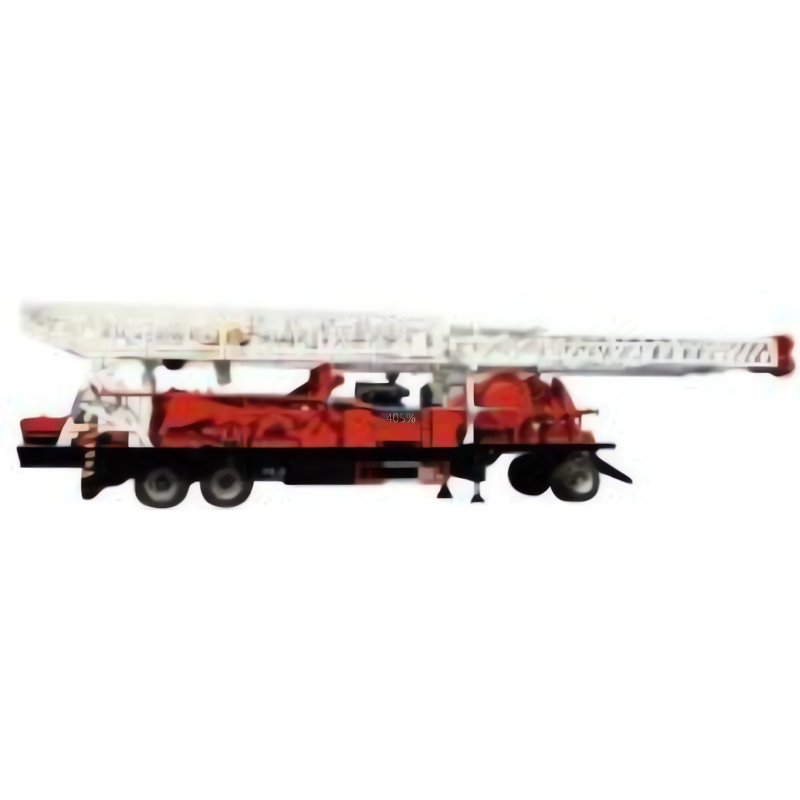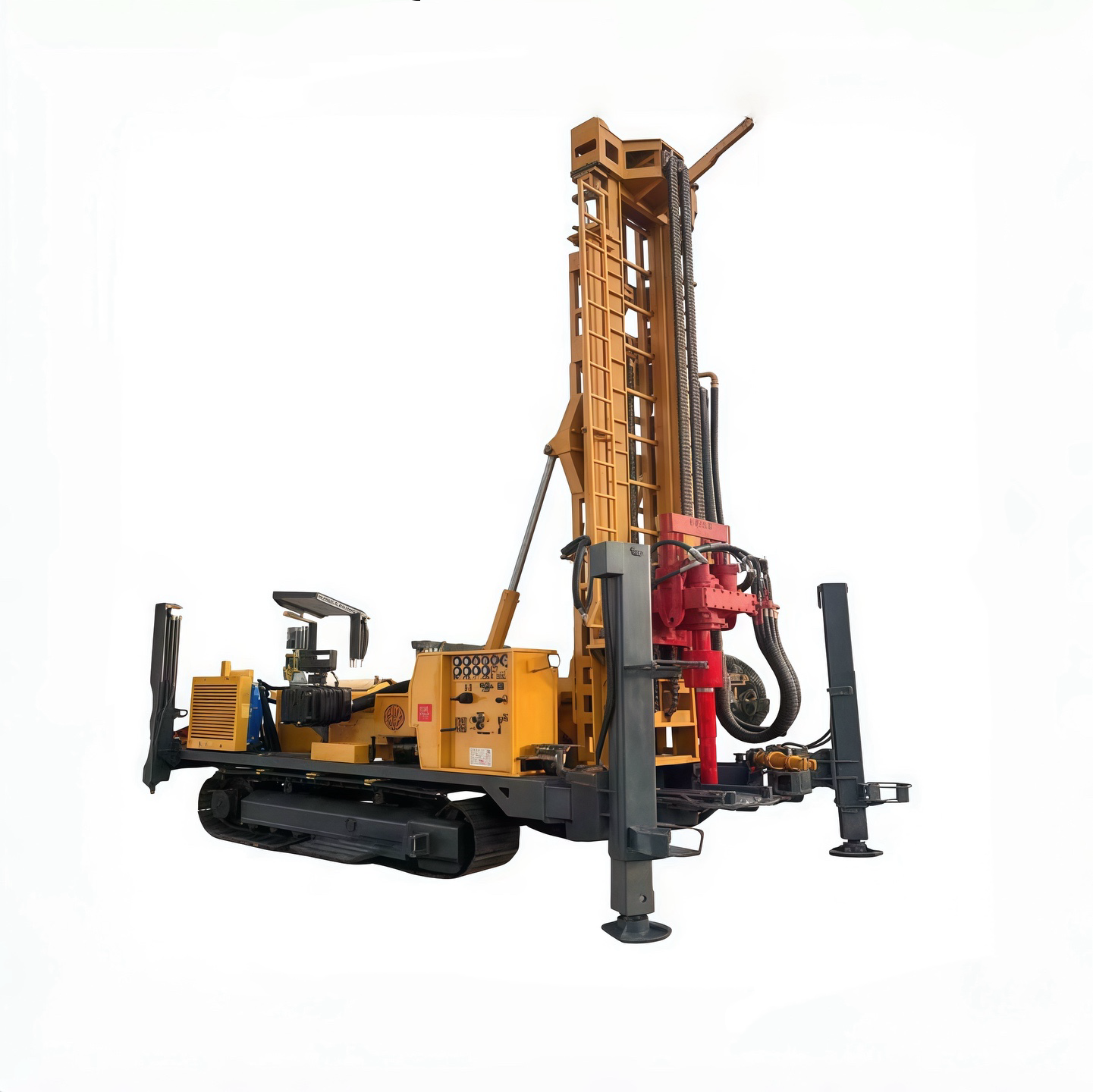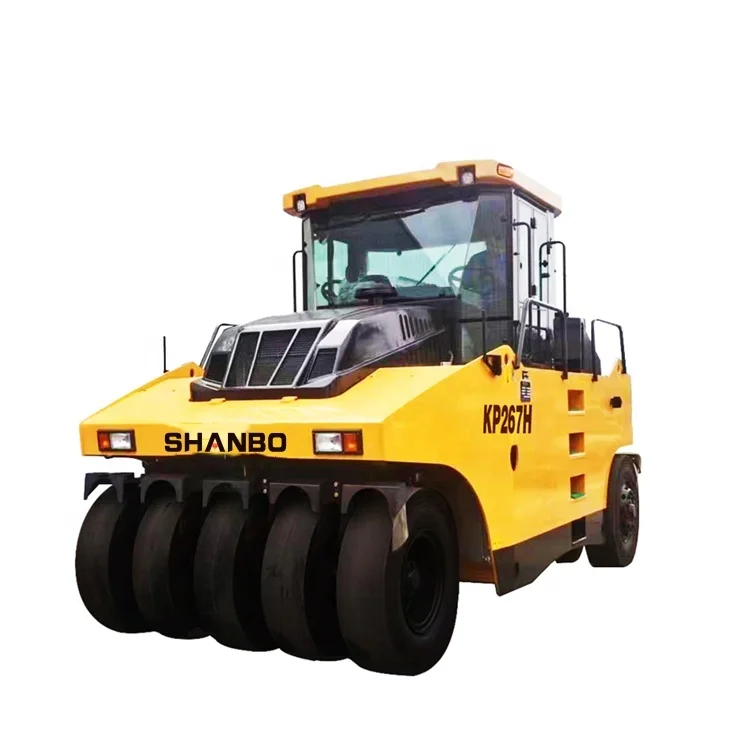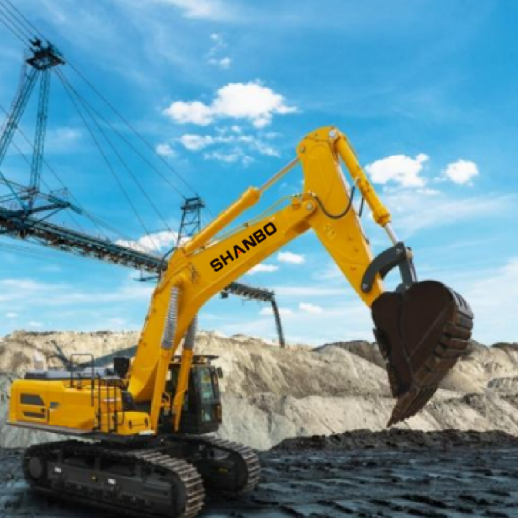Kagamitan sa Pagtatayo ng Daan para sa Maliit at Malalaking Proyekto
Ang pagtatayo ng kalsada ay isang kumplikadong proseso na nag-iiba nang malaki sa saklaw, sukat, at mga kailangang yaman ayon sa laki ng proyekto. Mula sa mga maliit na pagkukumpuni, tulad ng pagrerepaso ng mga butas sa kalsada sa isang residensyal na lugar, hanggang sa malalaking gawain, tulad ng pagtatayo ng maramihang lane na highway, ang mga gamit na ginagamit ay mahalaga sa pagtukoy ng kahusayan, gastos, at kalidad ng resulta.
Pag-unawa sa Mga Maliit na Proyekto sa Pagtatayo ng Kalsada
Karaniwan ay kasali sa mga maliit na proyekto sa pagtatayo ng kalsada ang lokal na mga pagkukumpuni, pangangalaga, o pagtatayo ng mga maliit na kalsada, tulad ng mga nasa rural na lugar, residensyal na lugar, o pribadong ari-arian. Ang mga proyektong ito ay may karaniwang limitadong badyet, mas maliit na grupo ng manggagawa, at hindi gaanong mahigpit na timeline kumpara sa mga malalaking proyekto. Ang mga gamit na ginagamit sa mga proyektong ito ay idinisenyo upang maging maliit, siksik, at matipid upang tugunan ang masikip na espasyo at mga simpleng gawain.
Mahahalagang Kagamitan para sa Maliit na Proyekto
-
Mga Maliit na Excavator
Ang mga kompaktoong excavator ay mahalaga para sa mga maliit na proyekto dahil sa kanilang versatility at kakayahang magtrabaho sa mga nakakulong na espasyo. Ginagamit ang mga makina na ito para sa pagmimina ng mga kanal, pagtanggal ng debris, o paghahanda ng mga surface para sa pagpapadulas. Dahil sa kanilang maliit na sukat, makakadaan ang mga ito sa makitid na kalsada o residential na lugar nang hindi nagdudulot ng malaking abala. Kasama ang mga attachment tulad ng augers o hydraulic breakers, ang mga kompaktoong excavator ay makakatulong sa iba't ibang gawain, mula sa pagbali ng matandang pavimento hanggang sa pag-install ng sistema ng kanalization. -
Mini Asphalt Pavers
Para sa paglalagay ng aspalto sa maliit na lugar, tulad ng mga driveway o sidewalk, ang mini asphalt pavers ay perpekto. Mas maliit ang mga makina na ito kaysa sa karaniwang pavers, kaya mas madali silang mapamahalaan sa makitid na espasyo. Nagbibigay ang mga ito ng makinis at pantay na tapusin para sa mas maliit na surface at kadalasang kasama ang mga compact roller upang tiyakin ang tamang pagkakakompakto ng aspalto. -
Compact Rollers
Ang pagpupugot ay isang mahalagang hakbang sa pagtatayo ng kalsada upang matiyak ang tibay at katatagan. Ginagamit ang mga compact na roller, tulad ng single-drum o tandem rollers, sa mga maliit na proyekto upang mapigil ang aspalto o lupa. Ang mga makina na ito ay magaan, madaling transportin, at angkop para sa mga maliit na ibabaw tulad ng paradahan o daanan ng bisikleta. Dahil sa kanilang sukat, maaari ng mga operator makatrabaho nang malapit sa mga gilid o balakid nang hindi nababawasan ang kalidad ng pagpupugot. -
Mga pag-load ng mga skid steer
Ang skid steer loaders ay mga napakaraming gamit na makina na karaniwang ginagamit sa maliit na proyekto. Kasama ang mga attachment tulad ng mga balde, walis o cold planers, maaari silang gumawa ng mga gawain tulad ng paghawak ng materyales, pagpapakinis ng ibabaw, o paglilinis ng lugar. Dahil sa kanilang kompakto at maniobra, mainam sila sa paggalaw sa maliit na lugar ng trabaho. -
Mga Kamay na Gamit at Maliit na Makinarya
Para sa maliit na pagkukumpuni, tulad ng pagpuno sa mga butas sa kalsada o pag-seal ng mga bitak, ang mga handheld na tool tulad ng asphalt tampers, crack sealers, at maliit na concrete mixers ay mahahalagang gamit. Pinapayagan ng mga tool na ito ang mga manggagawa na gawin ang mga tumpak na gawain nang hindi nangangailangan ng mabibigat na makinarya, pinapanatiling mababa ang gastos at miniminis ang abala sa trapiko o sa mga residente.
Mga Bentahe ng Mga Munting Kagamitan
Karaniwan ay mas mura ang mga kagamitang ginagamit sa maliit na proyekto sa pagbili o pag-upa, mas madaling transportin, at nangangailangan ng mas kaunting gasolina at pagpapanatili. Dahil sa kanilang munting sukat, mas madaling gamitin sa mga urban o residential na lugar kung saan maaaring hindi praktikal ang malalaking makina. Bukod dito, ang mga munting kagamitan ay kadalasang nangangailangan ng mas kaunting mga operator, kaya nababawasan ang gastos sa paggawa.
Mga Hamon ng Mga Munting Kagamitan
Kahit na ang maliit na kagamitan ay siksik, maaaring kulangan ito sa lakas at kapasidad na kailangan para sa mas malalaki o kumplikadong gawain. Ang mga proyekto na nangangailangan ng malaking paggalaw ng materyales o malawak na pagpapadulas ay maaaring tumagal nang mas matagal kapag umaasa sa maliit na makina. Kailangang maingat na suriin ng mga kontratista ang saklaw ng proyekto upang matiyak na ang napiling kagamitan ay kayang tugunan ang mga pangangailangan nito nang hindi nasasaktan ang kahusayan.

Pag-unawa sa Malalaking Proyektong Pangkalsada
Ang malalaking proyekto sa pagtatayo ng kalsada, tulad ng mga highway, pangunahing kalsada sa lungsod, o runway ng paliparan, ay kasali ang malawak na pagpaplano, malalaking badyet, at malalaking grupo ng manggagawa. Ang mga proyektong ito ay nangangailangan ng matibay, mataas na kapasidad na kagamitan na kayang hawakan ang malaking dami ng materyales, saklawan ng malalaking lugar, at matagal na operasyon. Ang kagamitan na ginagamit sa malalaking proyekto ay idinisenyo para sa kahusayan, tibay, at katumpakan upang matugunan ang mahigpit na mga pamantayan sa inhinyerya.
Mahahalagang Kagamitan para sa Malalaking Proyekto
-
Mga Buong Sukat na Excavator
Ang mga malalaking proyekto ay nangangailangan madalas ng paglipat ng napakalaking dami ng lupa o pagwasak sa mga umiiral na istraktura. Ang buong sukat na mga excavator ay mga makapangyarihang makina na may malalaking bucket o hydraulic attachments na kayang gumawa ng mabibigat na gawain. Ginagamit ang mga ito sa paghuhukay ng malalim na pundasyon, paggawa ng mga talusay o paglilinis ng malalaking lugar mula sa mga basura. Ang kanilang mataas na kapasidad at mga advanced na hydraulic system ang nagpapahalaga sa kanila sa mga pangunahing proyekto sa imprastraktura. -
Asphalt pavers
Ang mga standard na asphalt paver ay dinisenyo para maglagay ng malalapad at pantay-pantay na mga layer ng asphalt sa malalaking ibabaw, tulad ng maramihang lansangang kalsada o mga highway. Ang mga makina na ito ay may advanced na kontrol para sa tumpak na pag-aayos ng kapal at lapad, na nagsisiguro ng isang magkakasunod na resulta. Madalas na kasama ang mga ito ng mga material transfer vehicle upang mapanatili ang isang matatag na agos ng asphalt at mabawasan ang mga pagtigil habang nagta-tarap. -
Matalas na mga Roller
Para sa mga malalaking proyekto, ang heavy-duty rollers tulad ng double-drum o pneumatic tire rollers ay ginagamit upang makompak ang malalaking lugar ng aspalto o base materials. Ang mga makinaryang ito ay idinisenyo upang mahawakan ang mataas na dami at magbigay ng pantay-pantay na pagkakakompak sa ibabaw ng malawak na lugar. Ang ilang mga modelo ay mayroong vibratory systems upang mapahusay ang kahusayan ng pagkakakompak, na nagpapakakayang makatiis ang kalsada sa mabibigat na trapiko. -
Graders
Ang Graders ay mahalaga sa paglikha ng isang maayos at pantay na ibabaw bago maglagay ng pavimento. Ginagamit ng mga makinaryang ito ang isang mahabang talim upang tumpak na hubugin at level ang lupa, na nagsisiguro ng maayos na pagtalsik ng tubig at matibay na base. Sa mga malalaking proyekto, ang graders ay ginagamit upang maghanda sa malawak na lugar at mapanatili ang mahigpit na toleransiya para sa pagkakaayos at taas ng kalsada. -
Bulldozers
Ang Bulldozers ay ginagamit sa mga malalaking proyekto para sa paglilinis ng lupa, pagtulak ng malalaking dami ng lupa, o paggawa ng mga tanggulan. Dahil sa kanilang matibay na disenyo at malalakas na makina, kayang-kaya nilang gampanan ang mga gawain sa mapigil na terreno at sa mga mabibigat na materyales. Ang Bulldozers ay kadalasang ginagamit sa mga paunang yugto ng konstruksyon upang ihanda ang lugar para sa susunod pang mga gawain. -
Mga Makina sa Paglalagay ng Konsiyerto
Para sa mga proyekto na nangangailangan ng mga surface na gawa sa konsiyerto, tulad ng runway ng paliparan o mga pangunahing lansangan, ginagamit ang mga konsiyerong makina. Ang mga makina na ito ay nagkakalat, nagpapantay, at nagtatapos ng konsiyerto sa isang pagkakataon, upang matiyak ang isang maayos at matibay na surface. Mayroon silang advanced na mga sensor upang mapanatili ang tumpak na pagkakaayos at kapal, na mahalaga para sa imprastraktura na may maraming trapiko.
Mga Bentahe ng Malalaking Kagamitan
Ang mga malalaking kagamitan ay idinisenyo para sa mataas na produktibo at epektibo, kayang tapusin ang mga gawain nang mabilis sa malalawak na lugar. Ang mga makina na ito ay kadalasang may advanced na teknolohiya, tulad ng GPS at laser-guided system, upang matiyak ang tumpak at pagkakapareho. Ang kanilang tibay ay nagpapahintulot sa kanila na gumana nang paulit-ulit sa mahihirap na kondisyon, binabawasan ang downtime at pagkaantala ng proyekto.
Mga Hamon ng Malalaking Kagamitan
Ang pangunahing mga disbentaha ng malalaking kagamitan ay ang mataas na gastos nito, parehong pagbili o pag-upa at patuloy na pangangalaga. Ang mga makina na ito ay nangangailangan ng maraming puhunan sa gasolina at mga bihasang operator, na nagpapataas ng gastos sa operasyon. Bukod pa rito, ang kanilang sukat at bigat ay nagpapahirap sa paggamit sa maliit na espasyo, at ang pagdadala sa mga lugar ng gawain ay maaaring magkaroon ng komplikadong logistik.
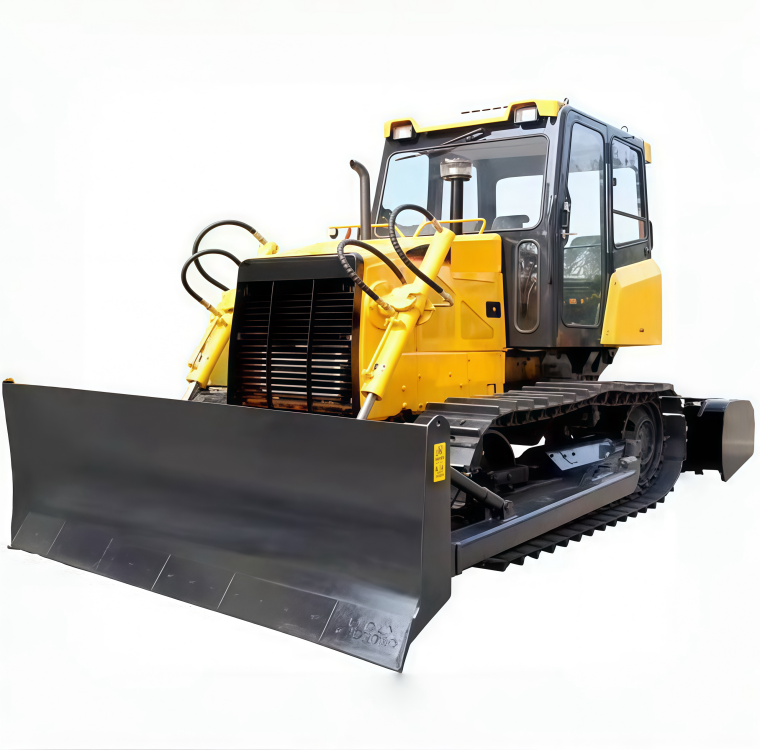
Paghahambing ng Mga Maliit at Malalaking Kagamitan
Ang pangunahing pagkakaiba sa pagitan ng kagamitan sa maliit at malaking eskala ng konstruksyon ng kalsada ay nakasalalay sa kanilang kapasidad, sukat, at layunin. Binibigyang-pansin ng maliit na kagamitan ang pagiging madali sa pagmaneho, murang gastos, at sari-saring gamit, na nagpapakita na ito ay angkop para sa mga lokal na proyekto o mga proyekto sa masikip na lugar. Ang malaking kagamitan naman ay nakatuon sa lakas, bilis, at katiyakan, na angkop para sa malalawak na proyekto na may mataas na pangangailangan.
Mga Salik na Dapat Isaalang-alang sa Pagpili ng Kagamitan
-
Saklaw at Sukat ng Proyekto
Dapat suriin ng mga kontratista ang sukat ng proyekto upang matukoy ang angkop na kagamitan. Ang maliit na proyekto ay nakikinabang sa mga maliit pero sari-saring gamit na makina, samantalang ang malaking proyekto ay nangangailangan ng kagamitan na may mataas na kapasidad upang matugunan ang maagang deadline at pamantayan ng kalidad. -
Mga Paghihigpit sa Badyet
Mas mura ang maliit na kagamitan, kaya ito angkop sa mga proyekto na may limitadong badyet. Ang malaking kagamitan, bagamat mas mahal, ay nag-aalok ng mas magandang halaga sa matagalang paggamit para sa mga proyektong nangangailangan ng mataas na produktibo. -
Kondisyon ng Lugar
Ang terreno, available space, at environmental considerations ay nakakaapekto sa pagpili ng kagamitan. Ang compact machines ay mas angkop para sa urban o residential areas, samantalang ang malalaking makina ay mainam sa bukas, rural, o industrial na setting. -
Pangangailangan sa Trabaho at Kasanayan
Madalas na nangangailangan ng mas kaunting operator at mas mababang pagsasanay ang small-scale equipment, samantalang ang large-scale machines ay maaaring nangangailangan ng may kasanayang technician para mapatakbo at mapanatili ang advanced na sistema. -
Epekto sa Kapaligiran
Ang mas maliit na makina ay karaniwang gumagamit ng mas mababang gasolina at naglalabas ng mas kaunting emissions, na nagpapagawa nito ng mas nakababagong kapaligiran para sa maliit na proyekto. Ang large-scale equipment, habang mahusay para sa malalaking proyekto, ay maaaring mag-iwan ng mas malaking epekto sa kapaligiran.
Kesimpulan
Ang pagpili ng tamang kagamitan para sa mga proyekto sa pagtatayo ng kalsada ay isang mahalagang desisyon na nakakaapekto sa kahusayan, gastos, at kalidad. Ang mga proyekto sa maliit na eskala ay nakikinabang mula sa mga kompakto, sari-saring makina na maaaring mag-navigate sa masikip na espasyo at maisagawa ang iba't ibang mga gawain gamit ang pinakamaliit na mga mapagkukunan. Ang mga proyekto naman sa malaking eskala ay nangangailangan ng malakas, mataas na kapasidad ng kagamitan upang harapin ang malawak na mga kargang gawain at matugunan ang mahigpit na mga pamantayan sa inhinyera.
Sa pamamagitan ng masusing pagsusuri sa saklaw ng proyekto, badyet, kondisyon ng lugar, at mga pagsasaalang-alang sa kapaligiran, ang mga kontratista ay maaaring pumili ng pinakaangkop na kagamitan upang matiyak ang matagumpay na mga resulta, kung ito man ay pagtatayo ng kalsada sa isang pamayanan o isang highway na may maraming lane.
Mga Inirerekomendang Produkto
 Balitang Mainit
Balitang Mainit
-
umabot sa Uzbekistan ang ‘Water Savior’ 200 metro Reverse Circulation Water Well Drills
2025-03-28
-
Ano ang Bulldozer? Lahat ng Kailangan Mong Malaman
2025-02-18
-
Skid Steer vs Bulldozer: Paghahambing sa Gastos, Kahirapan, at Kakayahang Magamit sa Iba't Ibang Gawain
2025-11-13
-
Loob ng Bulldozer Factory: Paano Ginagawa ang Modernong Dozers Mula sa Lupa
2025-11-12
-
Paano Patakbuhin ang Spider Excavator nang Ligtas at Mahusay
2025-11-11
-
Ano ang Excavator? Isang Gabay para sa mga Nagsisimula Tungkol sa Mahalagang Makinang Ito
2025-11-10
